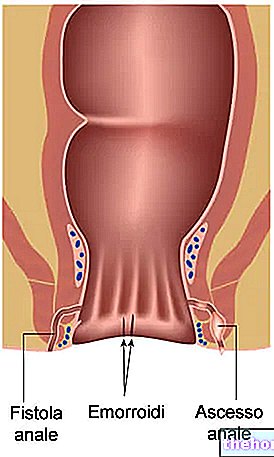
This classification is scarcely used today, as very often the intensity of the effect depends more on the dose administered than on the intrinsic activity of the drug. In light of all these considerations, the term purgative is increasingly used as a simple synonym for laxative .
The indications in favor of the purgatives are limited; in most cases, constipation can be corrected simply by increasing the intake of liquids and fibers, and by intensifying physical exercise.
When stubborn constipation is due to important underlying causes - such as anorectal pathologies (hemorrhoids, fissures, rectocele, etc.), nervous diseases, drugs or functional pathologies affecting the intestine (colitis, diverticulitis, etc.) - it is necessary to focus on the treatment of the causes rather than on the symptom constipation.
The purgatives, therefore, become necessary only on a few occasions, including the preparation for particular diagnostic or surgical procedures, the prevention of efforts for defecation and softening of the stool (for example in the presence of hemorrhoids or in the post-heart attack).
The occasional ingestion of a purgative should not be demonized, but its habitual or frequent use must be condemned, which can lead to addiction phenomena or serious side effects, especially when it is the result of self-prescription which, in principle, should not be done .
, since a purge can produce the desired laxative effect through multiple actions.
Lubricating purgatives
Irritating purgatives, stimulants
Mechanical purgatives
Osmotic purgatives
Sodium sulfate; magnesium sulfate; magnesium hydroxide; sodium and potassium tartrate; some laxative foods, such as tamarind, cassia, and prunes.
Lactulose, lactose, sugar alcohols (sorbitol, mannitol, glycerol), polyethylene glycol.
Update: New European Regulation of 18 March 2021
On April 8, 2021, the ban on marketing foods and food supplements containing hydroxyanthracenes and their derivatives, a family of molecules contained in various plants, such as aloe, cassia, rhubarb and senna, came into force.
More in detail, the new European Regulation of March 18, 2021 - which came into force, precisely, April 8, 2021 - modifies Annex III of Regulation (EC) No. 1925/2006 of the European Parliament and of the Council to as regards the botanical species containing hydroxyanthracene derivatives.
The full text can be consulted by clicking here. However, we can summarize the main points as follows:
- The following are added to the list of substances whose use in food is prohibited (Annex III part A of the aforementioned regulation):
- Aloe-emodin and all preparations in which this substance is present;
- Emodin and all preparations in which this substance is present;
- Preparations based on leaves of Aloe species containing hydroxyanthracene derivatives;
- Dantrone and all preparations in which this substance is present.
- The following are added to the list of substances whose use in food is subject to Community surveillance (Annex III part C):
- Preparations based on the root or rhizome of Rheum palmatum L., Rheum officinale Baillon and their hybrids containing hydroxyanthracene derivatives;
- Preparations based on leaves or fruits of Cassia senna L. containing derivatives of hydroxyanthracene;
- Preparations based on bark of Rhamnus frangula L. o Rhamnus purshiana A.D. containing derivatives of hydroxyanthracene.
The side effects of saline osmotic laxatives (magnesium sulfate, magnesium hydroxide and sodium salts) derive from the fact that a small percentage of the salts is still absorbed into the systemic circulation, causing more or less marked hydro-electrolytic imbalances. In this regard, hypertonic solutions are the most dangerous, especially for newborns and patients with kidney problems and hypertension. Polyethylene glycol, on the other hand, is generally well tolerated because it does not alter the patient's hydroelectrolytic balance.
Castor oil can cause damage to the intestinal mucosa, stimulate uterine contractions (contraindicated in pregnancy) and in the long term cause malabsorption. Vaseline oil can irritate the rectum and anal sphincter, and - if used for a long time - can cause malabsorption of fat-soluble vitamins.
The prolonged use of stimulant laxatives can lead to a deterioration of intestinal function, making the colon muscles more and more spastic and unable to contract. The abuse of anthraquinolones can cause melanosis of the colon.
Finally, we remind you that after an "energetic defecation induced by purging, a time interval of a few days is necessary before the waste necessary for a subsequent defecation accumulates in the intestinal tract. This condition of false constipation should absolutely not be understood as an anomalous phenomenon. and in no way justifies a new intake of purgatives.
;



























